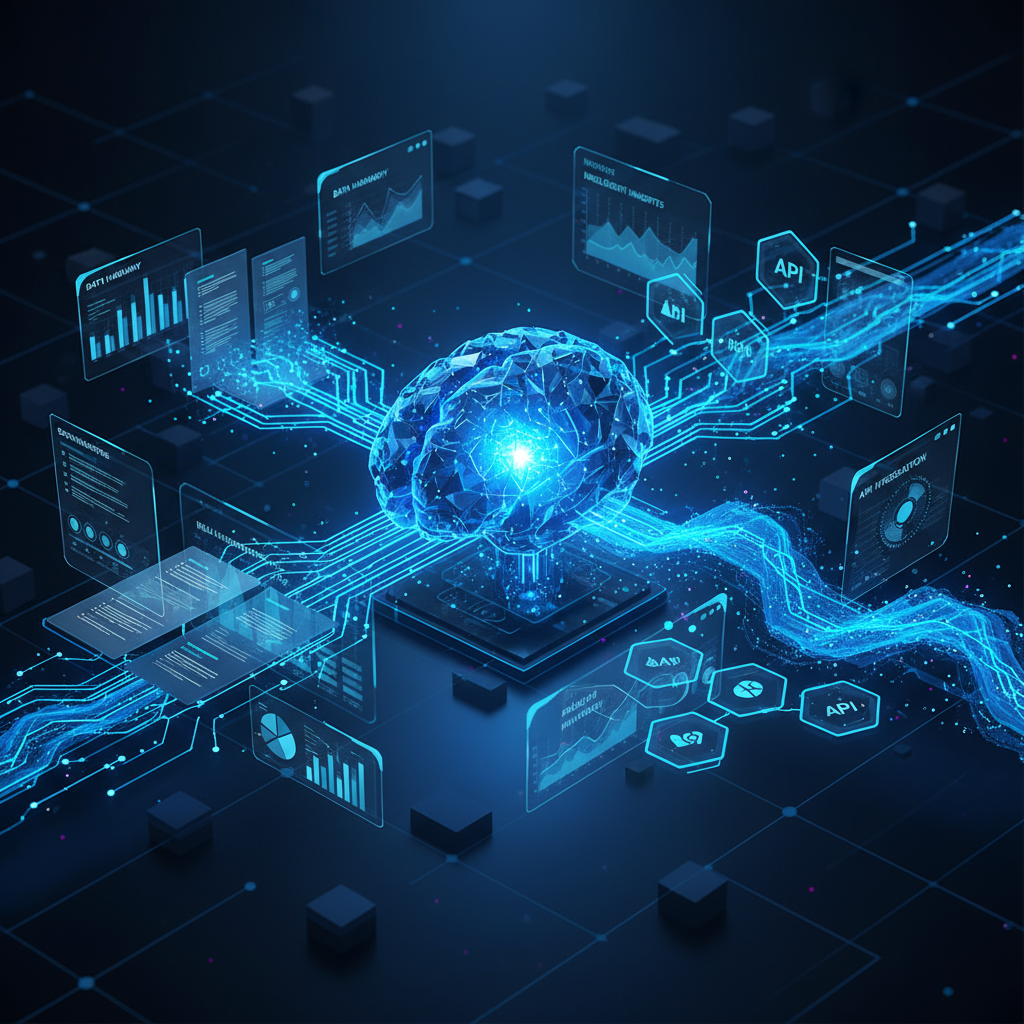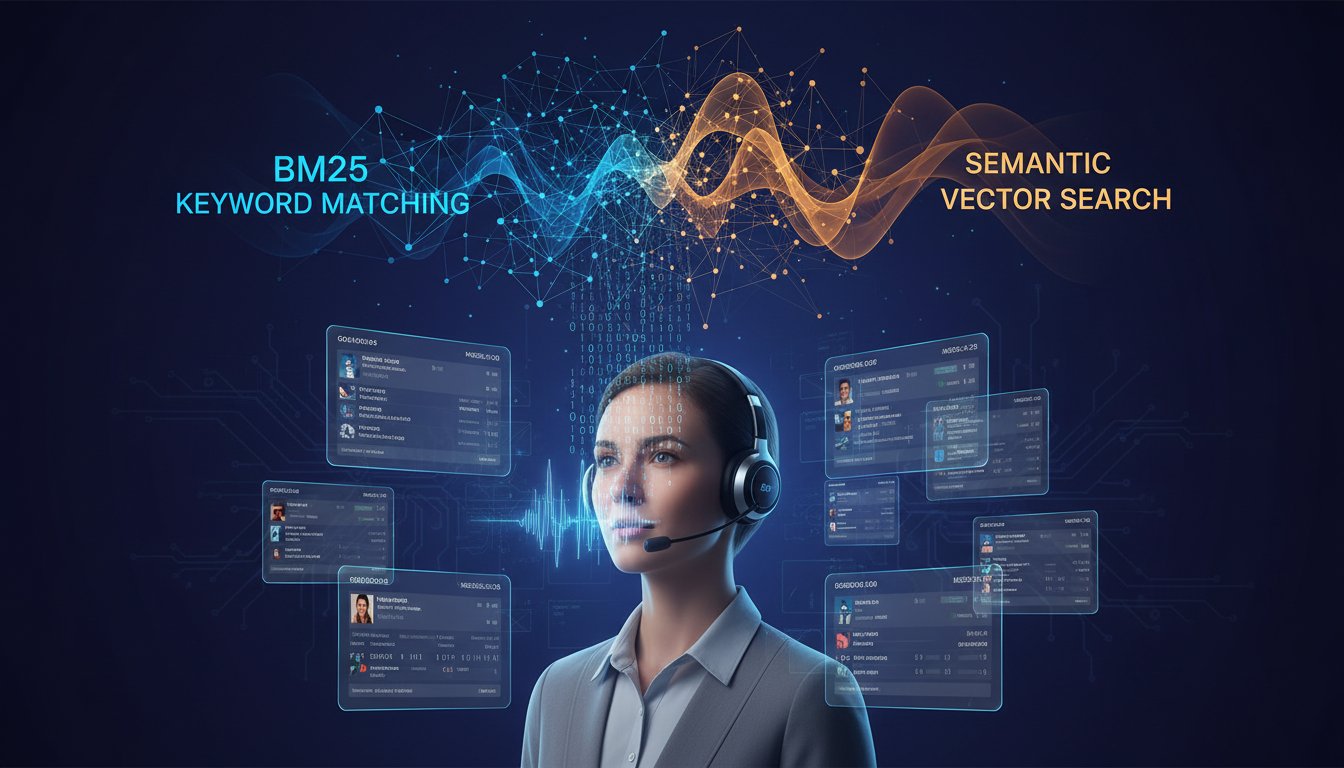Last week, a Fortune 500 CTO told me their traditional RAG system was “embarrassingly wrong” during a crucial board presentation. The system confidently cited outdated market data from 2022 when asked about current quarterly trends. This wasn’t just a technical glitch—it was a $50 million strategic miscalculation that could have been avoided with agentic RAG.
This scenario isn’t unique. Traditional RAG systems are hitting a wall in enterprise environments where static knowledge bases can’t keep pace with dynamic business needs. The solution? Agentic RAG systems that combine autonomous decision-making, real-time data retrieval, and multi-step reasoning to deliver enterprise-grade accuracy.
In this comprehensive guide, you’ll discover how to architect, implement, and deploy agentic RAG systems that can autonomously decide when to search internal documents, when to query external APIs, and when to combine multiple data sources for optimal responses. We’ll cover everything from the core architectural patterns to production deployment strategies, complete with code examples and enterprise implementation frameworks.
The Critical Limitations of Traditional RAG That Are Costing Enterprises Millions
Traditional RAG systems operate on a simple retrieve-then-generate paradigm that breaks down in complex enterprise scenarios. Here’s why they’re becoming obsolete:
Static Knowledge Boundaries: Traditional RAG systems are prisoners of their training data cutoff dates. When your legal team asks about recent regulatory changes or your sales team needs current competitor pricing, these systems fail spectacularly. They can’t distinguish between requests requiring historical knowledge versus real-time information.
Binary Decision Making: These systems treat all queries identically—retrieve from the knowledge base, then generate. There’s no intelligent routing, no consideration of data freshness, and no ability to escalate to external sources when internal knowledge is insufficient.
Relevance Hallucination: Perhaps most dangerously, traditional RAG systems will confidently generate responses even when retrieved documents are irrelevant. Without autonomous relevance assessment, they create authoritative-sounding but factually incorrect responses that can mislead critical business decisions.
Single-Source Limitation: Enterprise queries often require synthesizing information from multiple sources—internal documents, live databases, external APIs, and real-time feeds. Traditional RAG systems can’t orchestrate these multi-source workflows.
These limitations aren’t just theoretical—they’re costing enterprises real money through delayed decisions, strategic miscalculations, and lost competitive advantages.
Understanding Agentic RAG Architecture: The Multi-Agent Decision Framework
Agentic RAG systems solve traditional RAG limitations through autonomous agent orchestration and intelligent decision-making. Here’s the core architectural difference:
Agent-Based Decision Making: Instead of a single retrieve-generate pipeline, agentic RAG employs multiple specialized agents that can reason about query requirements, assess data relevance, and coordinate complex workflows.
Dynamic Source Selection: The system autonomously decides whether to search internal knowledge bases, query external APIs, or combine multiple sources based on query analysis and content freshness requirements.
Multi-Step Reasoning: Agentic RAG can break complex queries into subtasks, perform sequential information gathering, and synthesize comprehensive responses that traditional RAG simply cannot handle.
Core Architectural Components
The foundation of enterprise agentic RAG consists of five critical components working in concert:
1. Query Analysis Agent: This agent parses incoming queries to determine intent, required data freshness, complexity level, and optimal retrieval strategy. It uses structured prompting with LLMs like GPT-4o to classify queries into categories such as historical research, real-time data requests, or multi-source synthesis needs.
2. Retrieval Orchestration Agent: This component manages multiple retrieval mechanisms—vector databases for semantic search, keyword search for exact matches, and API calls for real-time data. It dynamically selects and combines retrieval strategies based on the query analysis.
3. Relevance Assessment Agent: Unlike traditional RAG’s binary approach, this agent continuously evaluates retrieved content relevance using LLM-powered scoring. It can reject irrelevant results and trigger alternative retrieval strategies.
4. External Source Integration Agent: This agent manages connections to external APIs, databases, and real-time feeds. It handles authentication, rate limiting, and data format normalization across diverse external sources.
5. Response Synthesis Agent: The final agent combines information from multiple sources, resolves conflicts, cites sources appropriately, and generates coherent responses that maintain enterprise quality standards.
Building Your First Agentic RAG System: LangGraph Implementation Guide
Let’s implement a production-ready agentic RAG system using LangGraph, which provides the stateful graph orchestration necessary for complex agent workflows.
Setting Up the Foundation
First, establish the core vector database and embedding infrastructure:
from sentence_transformers import SentenceTransformer
import numpy as np
from typing import List, Dict, Any
class EnterpriseVectorDatabase:
def __init__(self, model_name='all-MiniLM-L6-v2'):
self.model = SentenceTransformer(model_name)
self.vectors = []
self.metadata_index = {}
def add_document(self, doc_id: str, content: str, metadata: Dict):
embedding = self.model.encode(content)
record = {
"id": doc_id,
"vector": np.array(embedding, dtype=np.float32),
"content": content,
"metadata": metadata
}
self.vectors.append(record)
self.metadata_index[doc_id] = len(self.vectors) - 1
def cosine_similarity(self, vec_a: np.ndarray, vec_b: np.ndarray) -> float:
dot_product = np.dot(vec_a, vec_b)
norm_a = np.linalg.norm(vec_a)
norm_b = np.linalg.norm(vec_b)
return dot_product / (norm_a * norm_b + 1e-8)
def semantic_search(self, query: str, top_k: int = 5) -> List[Dict]:
query_embedding = self.model.encode(query)
results = []
for record in self.vectors:
similarity = self.cosine_similarity(query_embedding, record["vector"])
results.append({
"id": record["id"],
"content": record["content"],
"similarity": similarity,
"metadata": record["metadata"]
})
return sorted(results, key=lambda x: x["similarity"], reverse=True)[:top_k]
Implementing the Agent Workflow with LangGraph
Now let’s build the core agentic workflow using LangGraph’s stateful graph architecture:
from langgraph import StateGraph, END
from langchain_openai import ChatOpenAI
from langchain.schema import SystemMessage, HumanMessage
import requests
class AgenticRAGState:
def __init__(self):
self.query = ""
self.query_classification = {}
self.retrieved_docs = []
self.relevance_scores = []
self.external_data = []
self.final_response = ""
self.decision_path = []
def query_analysis_node(state: AgenticRAGState):
llm = ChatOpenAI(model="gpt-4o-mini", temperature=0)
analysis_prompt = """
Analyze the following query and classify it:
1. Temporal requirement: historical, recent, real-time
2. Complexity: simple, moderate, complex
3. Data sources needed: internal, external, hybrid
4. Confidence threshold: high, medium, low
Query: {query}
Respond with structured JSON.
"""
response = llm.invoke([
SystemMessage(content="You are a query analysis expert."),
HumanMessage(content=analysis_prompt.format(query=state.query))
])
# Parse the structured response (implementation depends on your parsing logic)
state.query_classification = parse_classification(response.content)
state.decision_path.append("query_analyzed")
return state
def retrieval_node(state: AgenticRAGState):
vector_db = EnterpriseVectorDatabase()
# Perform semantic search based on query classification
if state.query_classification.get("temporal") == "historical":
docs = vector_db.semantic_search(state.query, top_k=10)
else:
docs = vector_db.semantic_search(state.query, top_k=5)
state.retrieved_docs = docs
state.decision_path.append("internal_retrieval")
return state
def relevance_grading_node(state: AgenticRAGState):
llm = ChatOpenAI(model="gpt-4o-mini", temperature=0)
relevant_docs = []
for doc in state.retrieved_docs:
grading_prompt = f"""
Evaluate if this document is relevant to the query.
Query: {state.query}
Document: {doc['content'][:500]}
Respond with 'RELEVANT' or 'NOT_RELEVANT' and a confidence score 0-1.
"""
response = llm.invoke([HumanMessage(content=grading_prompt)])
if "RELEVANT" in response.content:
doc['relevance_score'] = extract_confidence_score(response.content)
relevant_docs.append(doc)
state.retrieved_docs = relevant_docs
state.decision_path.append("relevance_graded")
return state
def decision_node(state: AgenticRAGState):
# Decide whether to proceed with internal docs or fetch external data
relevance_threshold = 0.7
avg_relevance = sum(doc.get('relevance_score', 0) for doc in state.retrieved_docs) / len(state.retrieved_docs) if state.retrieved_docs else 0
if avg_relevance >= relevance_threshold and state.query_classification.get("temporal") != "real-time":
return "generate_response"
else:
return "external_search"
def external_search_node(state: AgenticRAGState):
# Implement external API calls (Tavily, custom APIs, etc.)
search_api_url = "https://api.tavily.com/search"
search_payload = {
"api_key": "your_tavily_api_key",
"query": state.query,
"search_depth": "advanced",
"max_results": 5
}
response = requests.post(search_api_url, json=search_payload)
external_results = response.json().get('results', [])
state.external_data = external_results
state.decision_path.append("external_search")
return state
def response_generation_node(state: AgenticRAGState):
llm = ChatOpenAI(model="gpt-4o", temperature=0.3)
context_sources = []
# Combine internal and external sources
for doc in state.retrieved_docs:
context_sources.append(f"Internal Doc: {doc['content']}")
for ext_doc in state.external_data:
context_sources.append(f"External Source: {ext_doc.get('content', '')}")
generation_prompt = f"""
Based on the following context sources, provide a comprehensive answer to the user's query.
Include proper source citations and indicate data freshness where relevant.
Query: {state.query}
Context Sources:
{chr(10).join(context_sources)}
Decision Path: {' -> '.join(state.decision_path)}
"""
response = llm.invoke([HumanMessage(content=generation_prompt)])
state.final_response = response.content
state.decision_path.append("response_generated")
return state
Orchestrating the Complete Workflow
Now we’ll tie everything together using LangGraph’s state management:
def build_agentic_rag_graph():
# Create the state graph
workflow = StateGraph(AgenticRAGState)
# Add nodes
workflow.add_node("query_analysis", query_analysis_node)
workflow.add_node("retrieval", retrieval_node)
workflow.add_node("relevance_grading", relevance_grading_node)
workflow.add_node("decision", decision_node)
workflow.add_node("external_search", external_search_node)
workflow.add_node("response_generation", response_generation_node)
# Define the flow
workflow.set_entry_point("query_analysis")
workflow.add_edge("query_analysis", "retrieval")
workflow.add_edge("retrieval", "relevance_grading")
workflow.add_edge("relevance_grading", "decision")
# Conditional routing based on decision node
workflow.add_conditional_edges(
"decision",
lambda state: decision_node(state),
{
"generate_response": "response_generation",
"external_search": "external_search"
}
)
workflow.add_edge("external_search", "response_generation")
workflow.add_edge("response_generation", END)
return workflow.compile()
# Usage example
def query_agentic_rag(user_query: str):
graph = build_agentic_rag_graph()
initial_state = AgenticRAGState()
initial_state.query = user_query
result = graph.invoke(initial_state)
return {
"response": result.final_response,
"decision_path": result.decision_path,
"sources_used": len(result.retrieved_docs) + len(result.external_data)
}
Enterprise Integration Strategies: CrewAI vs LangGraph
For enterprise deployment, you’ll need to choose between orchestration frameworks based on your specific requirements:
CrewAI Approach
CrewAI excels in scenarios requiring clear role-based agent separation and complex multi-agent coordination:
from crewai import Agent, Task, Crew
from crewai_tools import SerperDevTool, WebsiteSearchTool
# Define specialized agents
retrieval_specialist = Agent(
role="Information Retrieval Specialist",
goal="Find the most relevant information for user queries",
backstory="Expert at navigating complex information landscapes",
tools=[SerperDevTool(), WebsiteSearchTool()],
allow_delegation=False,
verbose=True
)
analysis_expert = Agent(
role="Data Analysis Expert",
goal="Evaluate information quality and synthesize insights",
backstory="Specialist in information validation and synthesis",
allow_delegation=True,
verbose=True
)
# Define coordinated tasks
retrieval_task = Task(
description="Retrieve comprehensive information about {query}",
agent=retrieval_specialist,
expected_output="Structured information with source citations"
)
analysis_task = Task(
description="Analyze retrieved information and generate response for {query}",
agent=analysis_expert,
expected_output="Final synthesized response with quality assessment"
)
# Orchestrate the crew
rag_crew = Crew(
agents=[retrieval_specialist, analysis_expert],
tasks=[retrieval_task, analysis_task],
process="sequential",
memory=True,
cache=True
)
When to Choose Each Framework
Use LangGraph when:
– You need fine-grained control over decision logic
– Complex conditional routing is required
– State management across multiple steps is critical
– You’re building custom enterprise workflows
Use CrewAI when:
– Role-based agent specialization is important
– You need rapid prototyping capabilities
– Team-like collaboration patterns fit your use case
– You want built-in memory and caching features
Production Deployment and Monitoring
Deploying agentic RAG systems in enterprise environments requires robust infrastructure and monitoring capabilities:
Containerization Strategy
Package your agentic RAG system for enterprise deployment:
FROM python:3.11-slim
WORKDIR /app
COPY requirements.txt .
RUN pip install --no-cache-dir -r requirements.txt
COPY . .
EXPOSE 8000
CMD ["uvicorn", "main:app", "--host", "0.0.0.0", "--port", "8000"]
Monitoring and Observability
Implement comprehensive monitoring for production systems:
import logging
import time
from prometheus_client import Counter, Histogram, start_http_server
# Metrics collection
query_counter = Counter('rag_queries_total', 'Total RAG queries', ['query_type'])
response_time = Histogram('rag_response_time_seconds', 'RAG response time')
relevance_score = Histogram('rag_relevance_score', 'Average relevance score')
def monitor_agentic_rag(func):
def wrapper(*args, **kwargs):
start_time = time.time()
try:
result = func(*args, **kwargs)
# Record metrics
query_counter.labels(query_type='success').inc()
response_time.observe(time.time() - start_time)
# Log decision path
logging.info(f"Query processed: {result.get('decision_path')}")
return result
except Exception as e:
query_counter.labels(query_type='error').inc()
logging.error(f"RAG processing failed: {str(e)}")
raise
return wrapper
Enterprise Security Considerations
Secure your agentic RAG deployment with enterprise-grade security:
- API Authentication: Implement OAuth2 or JWT-based authentication for all external API calls
- Data Encryption: Encrypt vector embeddings and sensitive metadata at rest
- Access Controls: Implement role-based access control for different document collections
- Audit Logging: Track all queries, decisions, and data access for compliance
- Rate Limiting: Prevent abuse with intelligent rate limiting based on user roles
Measuring Success: Enterprise RAG Metrics That Matter
Track these critical metrics to ensure your agentic RAG system delivers enterprise value:
Accuracy Metrics:
– Response relevance scores (target: >0.85)
– Source citation accuracy (target: >95%)
– Fact-checking validation rates
Performance Metrics:
– End-to-end response time (target: <3 seconds)
– Decision path efficiency
– External API success rates
Business Impact Metrics:
– User satisfaction scores
– Query resolution rates
– Time saved vs. manual research
– Strategic decision support accuracy
Agentic RAG systems represent the next evolution in enterprise AI, moving beyond static knowledge retrieval to dynamic, intelligent information synthesis. By implementing the architectural patterns and frameworks outlined in this guide, you’ll build systems that can autonomously navigate complex enterprise information landscapes, deliver accurate real-time insights, and support critical business decisions with confidence.
The key to success lies in understanding that agentic RAG isn’t just about better search—it’s about creating AI systems that can reason, decide, and act autonomously while maintaining enterprise-grade accuracy and reliability. Start with the LangGraph implementation for maximum flexibility, then scale with proper monitoring, security, and performance optimization. Your enterprise deserves AI systems that can think, not just retrieve—and agentic RAG is how you deliver that capability.




